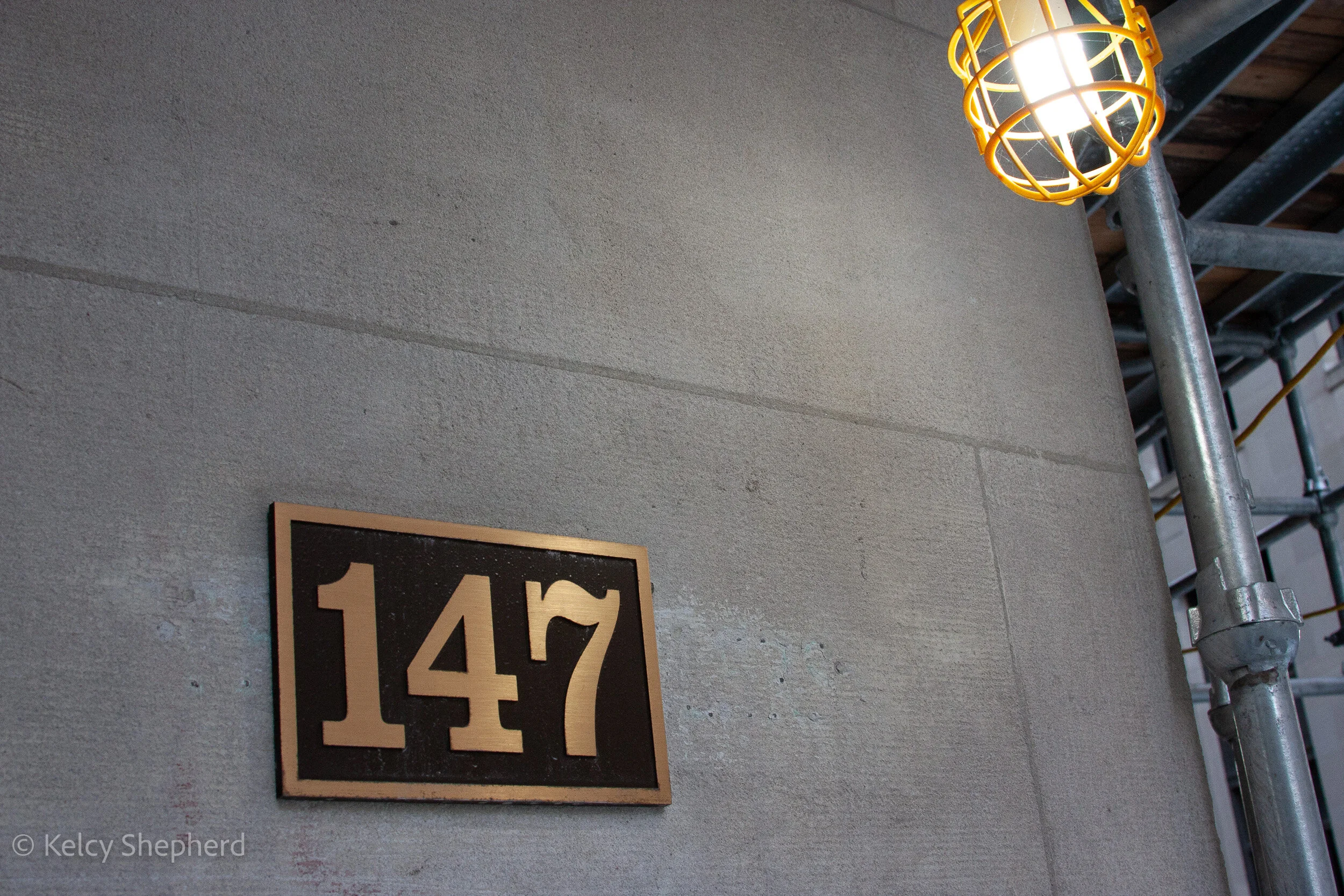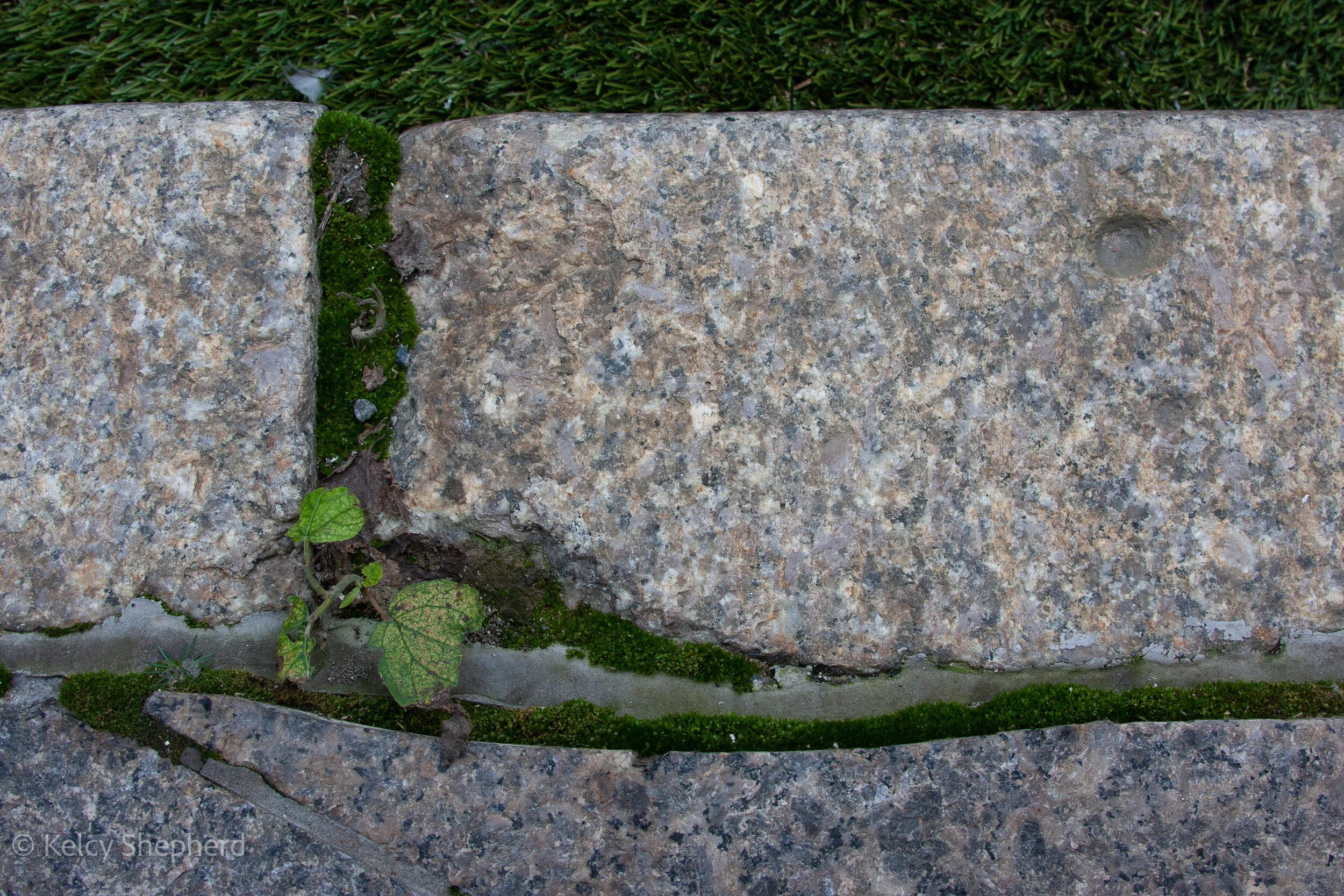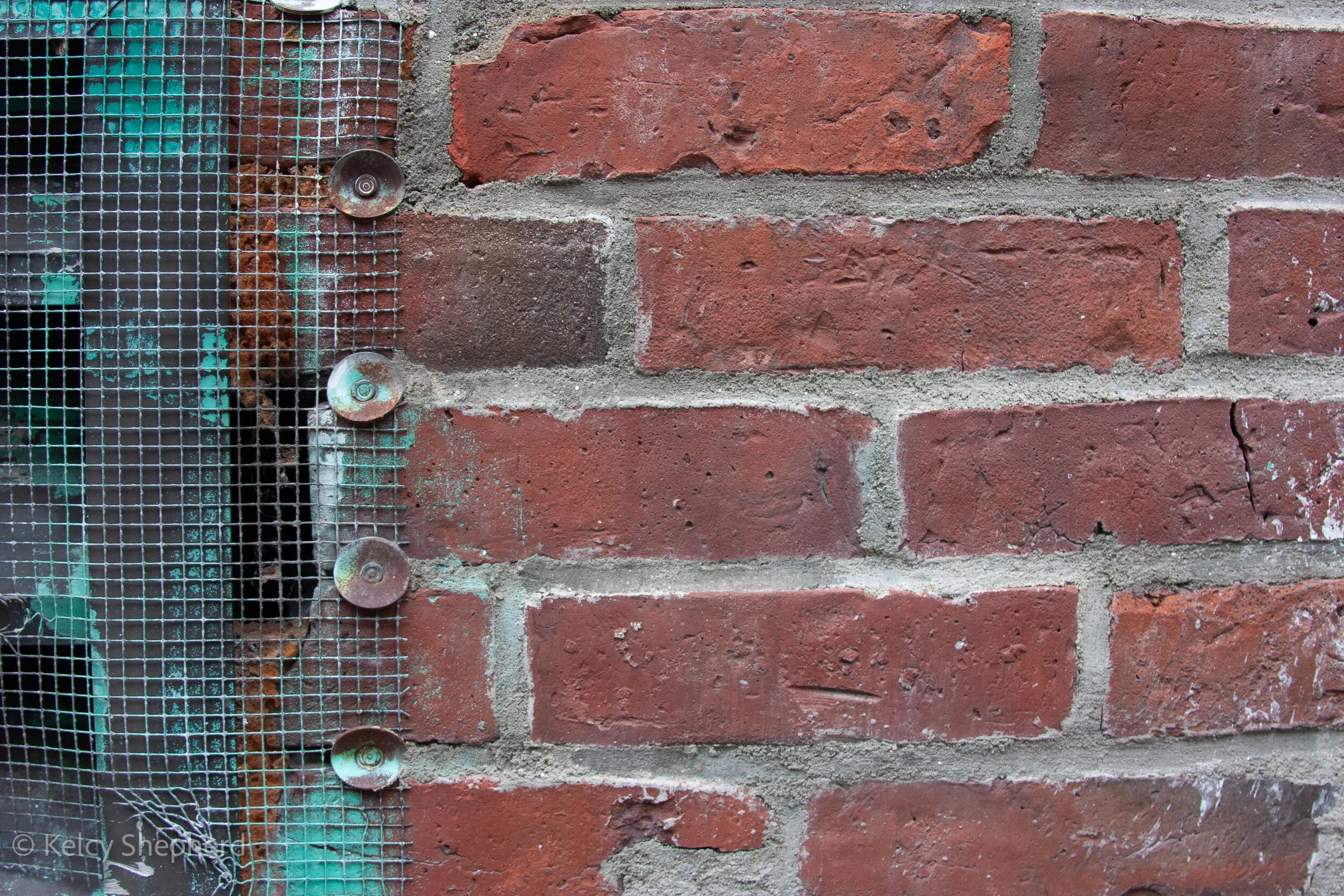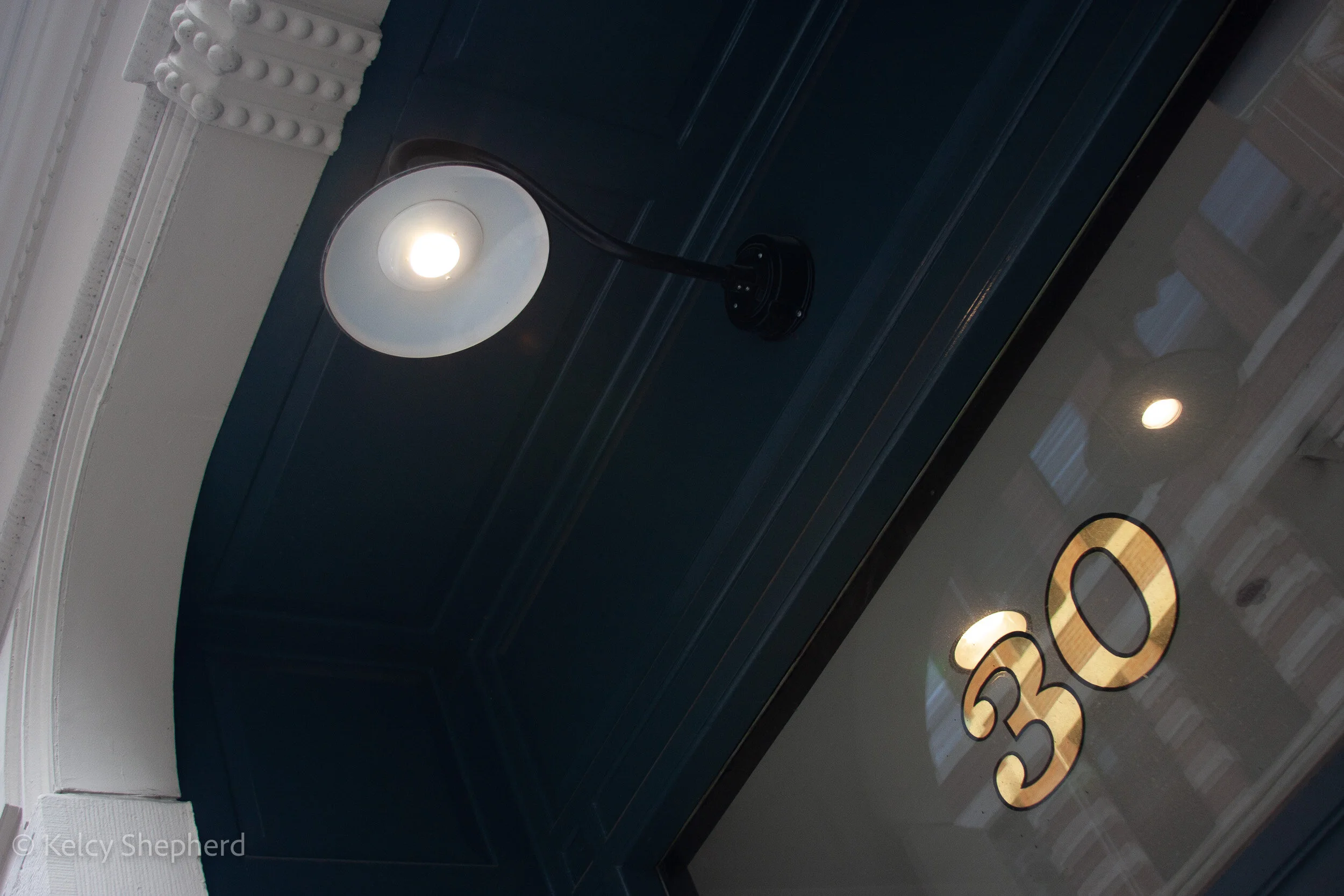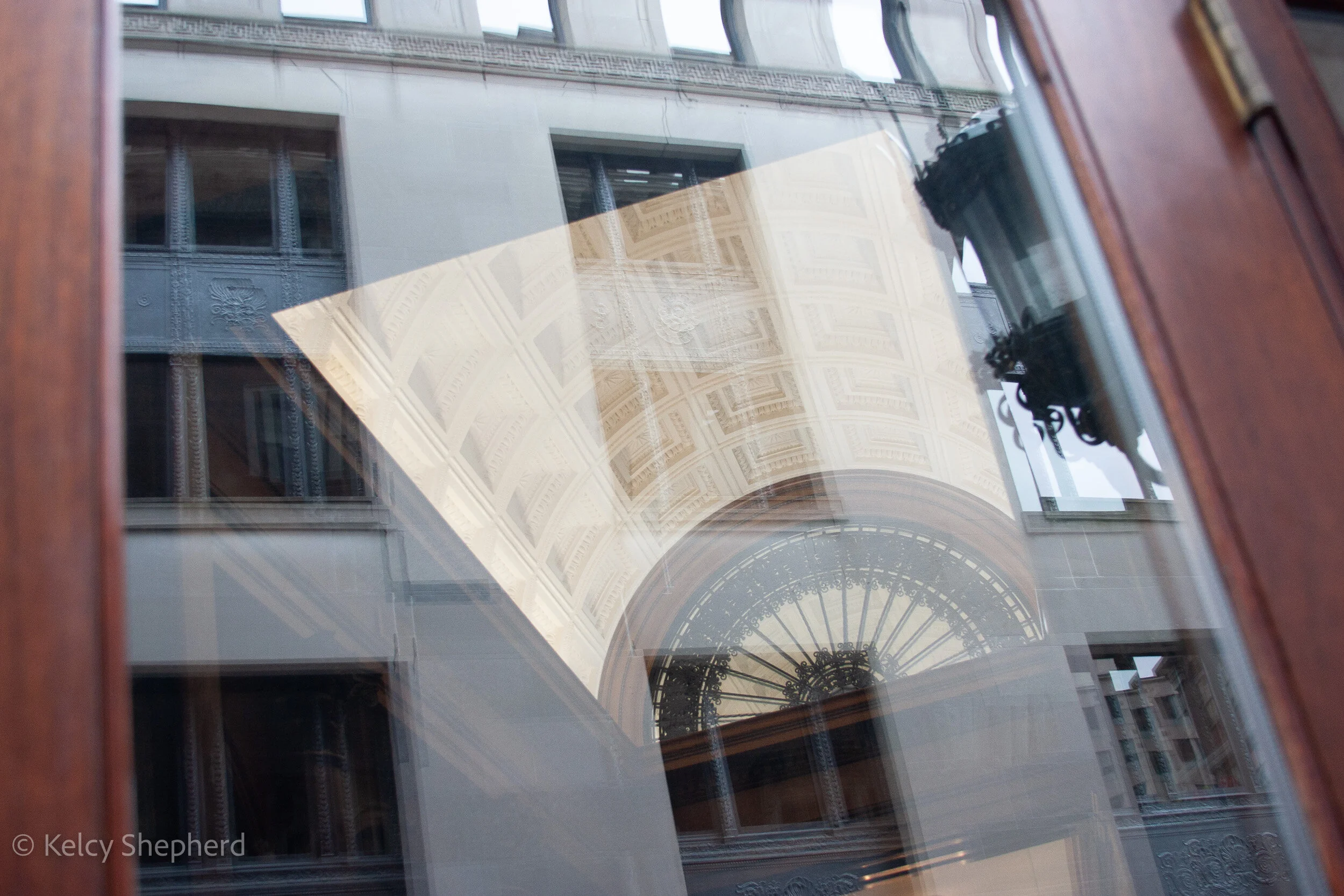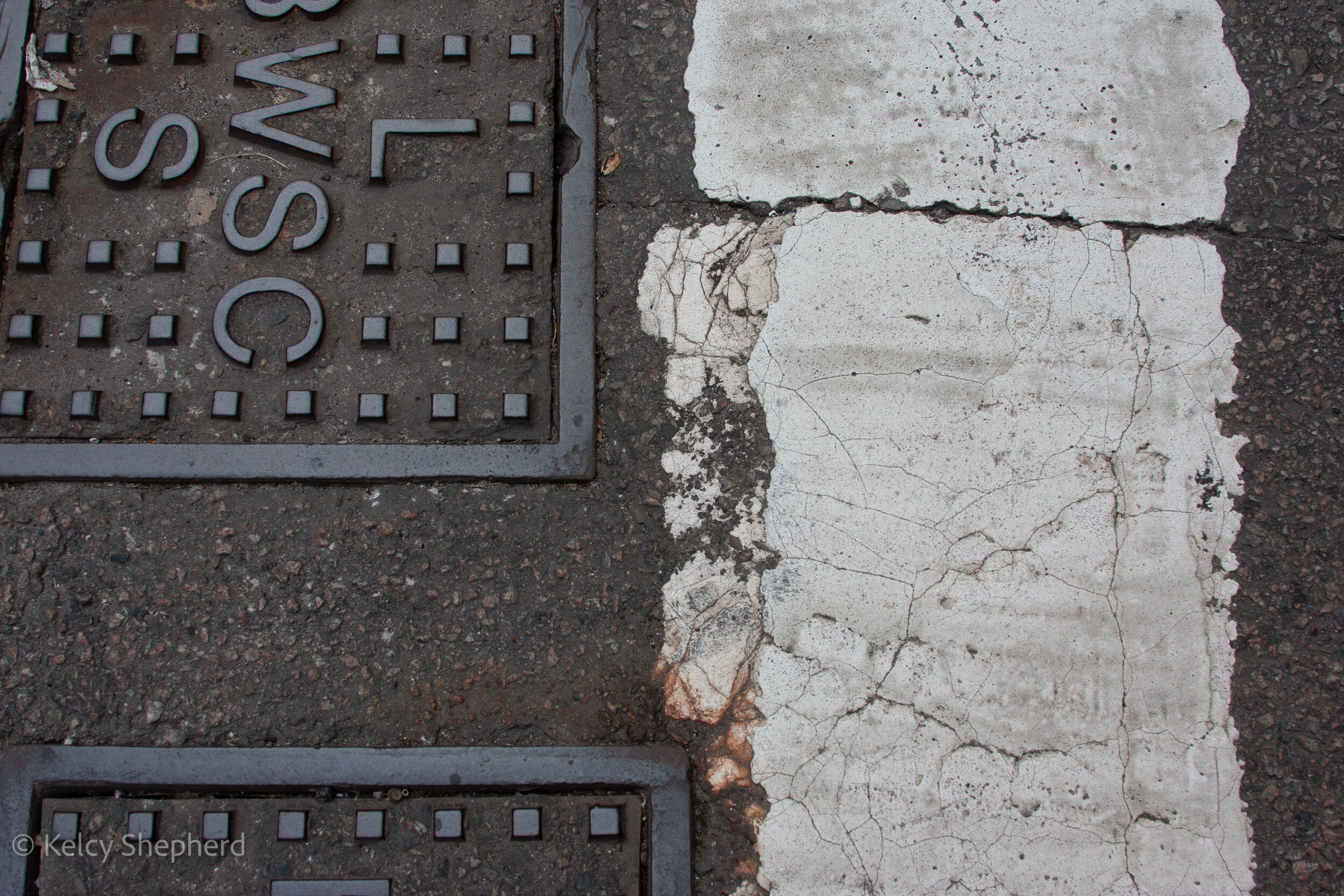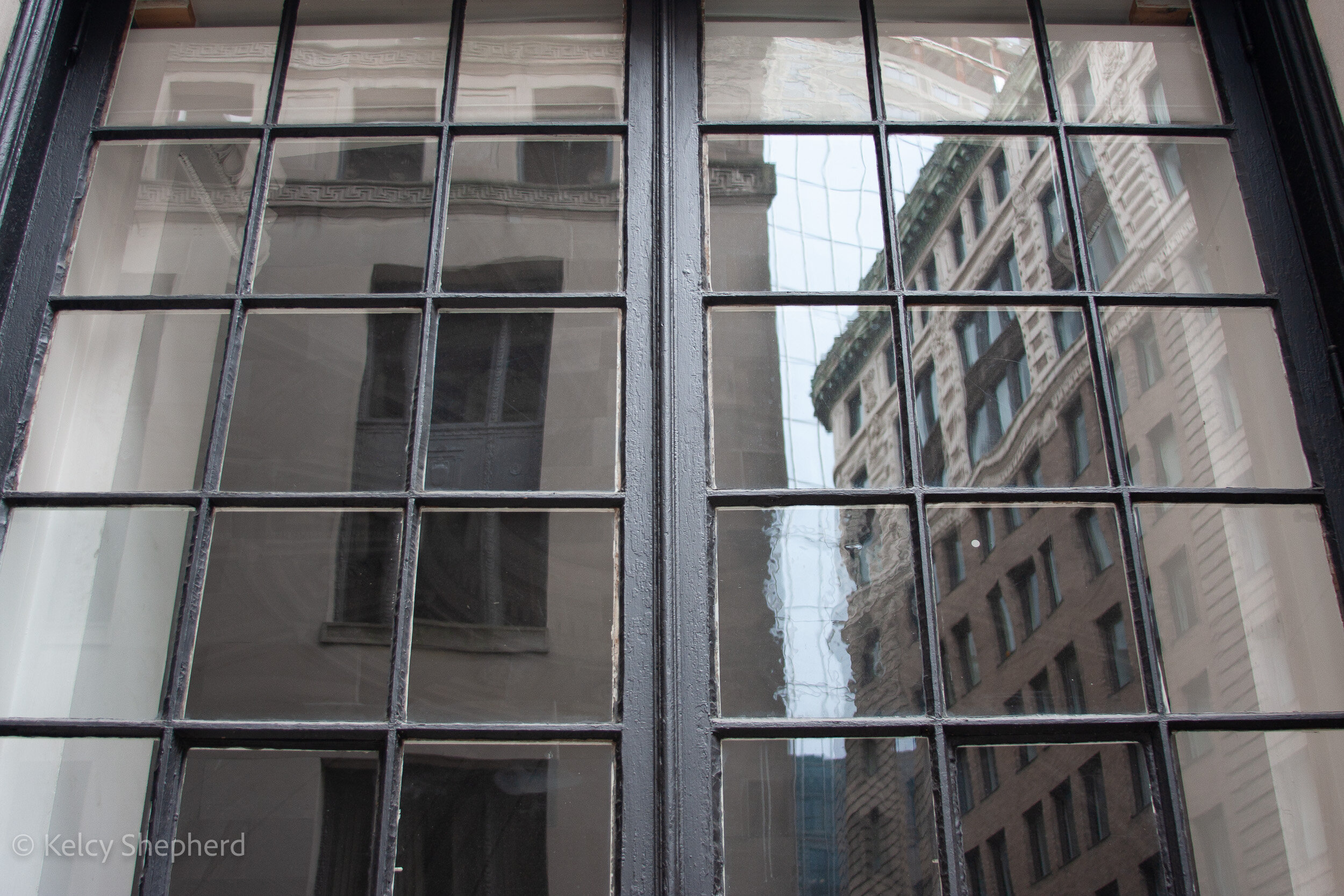
assignment 5. channel your inner eggleston
This assignment is all about slowing down and paying attention to your environment. This is an exercise in seeing that requires patience and imagination to see the potential in the unremarkable. Choose an area the equivalent of 3 city blocks. Choose a focal length of between 35mm - 50mm FF (+/- 24mm - 35mm on 1.5 cropped sensor equivalent).
Step 1
Walk the path without taking any photos. Only looking... really looking. Be present.
Step 2
Walk the path looking only to the left and up and make a minimum of 20 photographs.
Step 3
Walk the path looking only downwards and make a minimum of 20 photographs.
Step 4
Walk the path looking only to the right and up and make a minimum of 20 photographs.
Submit 5 images from each set.
looking left and up
Architectural detail. 1/40s f3.5 ISO 200 28mm. October 2021. Boston, Massachusetts. Photo by Kelcy Shepherd.
Supreme Council Royal Arcanum Building. 1/60s f8 ISO 200 28mm. October 2021. Boston, Massachusetts. Photo by Kelcy Shepherd.
Lily's Pizza window. 1/25s f3.5 ISO 200 28mm. October 2021. Boston, Massachusetts. Photo by Kelcy Shepherd.
147 Milk Street. 1/100s f7.1 ISO 800 28mm. October 2021. Boston, Massachusetts. Photo by Kelcy Shepherd.
Buildings reflected in granite. 1/60s f5.0 ISO 800 28mm. October 2021. Boston, Massachusetts. Photo by Kelcy Shepherd.
looking down
Granite curb with moss and astroturf. 1/100s f6.3 ISO 400 28mm. October 2021. Boston, Massachusetts. Photo by Kelcy Shepherd.
Fire hydrant. 1/60s f5.6 ISO 200 28mm. October 2021. Boston, Massachusetts. Photo by Kelcy Shepherd.
Manhole cover. 1/100s f7.1 ISO 200 28mm. October 2021. Boston, Massachusetts. Photo by Kelcy Shepherd.
Storm drain. 1/40s f4 ISO 200 28mm. October 2021. Boston, Massachusetts. Photo by Kelcy Shepherd.
Simplex Brooklyn, NY. 1/50s f4.5 ISO 640 28mm. October 2021. Boston, Massachusetts. Photo by Kelcy Shepherd.
looking right and up
Mesh and bricks. 1/50s f4.5 ISO 200 28mm. October 2021. Boston, Massachusetts. Photo by Kelcy Shepherd.
Fire escape. 1/40s f4 ISO 200 28mm. October 2021. Boston, Massachusetts. Photo by Kelcy Shepherd.
30 Batterymarch Street. 1/30s f4 ISO 200 28mm. October 2021. Boston, Massachusetts. Photo by Kelcy Shepherd.
Coffered ceiling. 1/50s f4 ISO 400 28mm. October 2021. Boston, Massachusetts. Photo by Kelcy Shepherd.
View of alley with dumpster and graffiti. 1/20s f3.5 ISO 400 28mm. October 2021. Boston, Massachusetts. Photo by Kelcy Shepherd.
reflection
This assignment pushed me to see rich possibilities in every aspect of an urban street. I got so immersed in taking photos that I was surprised to see that nearly three hours had passed. My hands and wrists were sore as I walked home, eager to download the images and see how they’d turned out.
After watching the video on Eggleston I was willing to try more — to capture ugly subjects, to break some of the rules of composition, to look at things from multiple angles and distances. I would not have learned as much about finding beauty in the mundane without watching the video before the shoot. Eggleston mentioned that he only takes one shot for each subject. I didn’t follow that approach because I don’t have the same level of technical experience, but I did use the assignment as a way to experiment with manual settings. In tricky situations like a backlit subject I took the same shot at multiple settings to learn how to achieve the best exposure. I also got practice in adjusting my ISO settings for different conditions — the open street, buildings in front of an overcast sky, doorways, or under the cover of scaffolding.
I learned that symmetry and a straight-on perspective doesn’t always produce the most striking image. I often see things graphically in my head, which I want to translate to a flat image. Sometimes that works, but for many of the subjects I shot things got more interesting when I changed my position to be angled or uncentered. For example, now when I look at the image of the manhole cover with yellow spray paint and crosswalk lines, I wonder what that would look like from a low angle instead of looking straight down. Overall, I noticed that as the shoot progressed I took more photos, captured more variety, and had more good options to choose from, so I could see that I improved even within the shoot itself.
I came away with both aesthetic and technical lessons that I will apply to future projects. Aesthetically, I’ll work to approach shoots with the same sense of exploration and of looking at an environment with a close eye and open mind. I’ll also try to apply the lesson of angles and asymmetry in my compositions. On the technical side, I still need practice in adjusting the settings — and frustratingly in remembering to reset my ISO right away if I change it. I think I may be someone who needs the 10,000 hours approach to learning in order to get really good at the exposure triangle and having that knowledge be second nature. I have another three block stretch in mind where I’d like to do this assignment again, and I’ll be using it as well as future assignments to reinforce and refine these lessons.
outtakes
Construction site. 1/100s f7.1 ISO 800 28mm. October 2021. Boston, Massachusetts. Photo by Kelcy Shepherd.
Safety cone. 1/30s f4 ISO 200 28mm. October 2021. Boston, Massachusetts. Photo by Kelcy Shepherd.
Detail of crosswalk with manhole cover. 1/100s f7.1 ISO 200 28mm. October 2021. Boston, Massachusetts. Photo by Kelcy Shepherd.
Scooter parking sign. 1/100s f3.5 ISO 200 28mm. October 2021. Boston, Massachusetts. Photo by Kelcy Shepherd.
Buildings reflected in panes of glass. 1/30s f4 ISO 200 28mm. October 2021. Boston, Massachusetts. Photo by Kelcy Shepherd.



